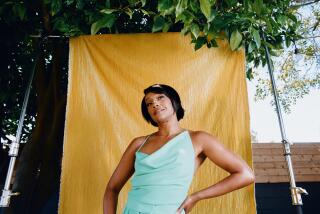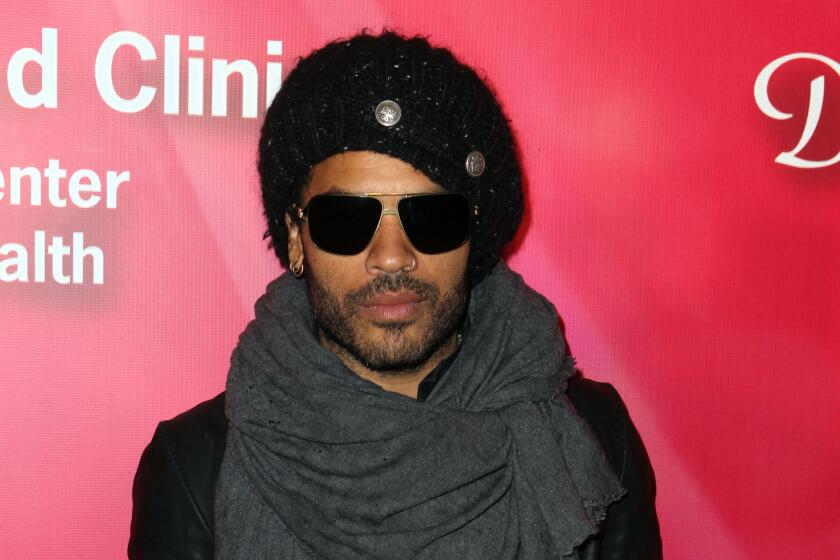Disneyland Monorail Aficionado Victor Korman Has a One-Track Mind
He calls his group “The Incredibly Ad Hoc Committee to Save the World’s Last Mark III Monorail.” He might have added “The World’s Smallest Committee,” consisting of Victor Korman. Period.
What galvanizes the latent crusader in Korman, a typesetter from Huntington Beach, is Disneyland’s plan to phase out the last of the Mark III monorails in favor of the newer Mark V (Mark IVs are used at Disney World). Korman does not argue with the updating (scheduled for the end of March) but feels the Mark III--”Big Red,” he calls it--should be displayed in a museum, preferably one in the Southland. To that end, he has written to 150 institutions, hoping they’ll give Big Red a garage, if not a home.
“Nothing wrong with the Mark V,” says Korman. “It’s beautiful: bullet-shaped, made of Fiberglas components. But it doesn’t have that bubble top and stainless-steel sides. It’s not my generation’s vision of the future. The kids growing up now, it’ll be their vision, fair enough. An earlier generation’s vision was Buck Rogers. The Mark V is, in effect, the difference between Buck Rogers and ‘Star Wars.’ ”
Disneyland, for Korman as a child, “was the way the world could and ought to be. I wanted to work there when I got old enough. I’d offer to sleep in the monorail shed and guard them.” Onrushing maturity dictated another path for Korman, but his vision lives on. “They say they’re going to demolish Big Red,” he says, “demolish this lovely work of functional art. It would be a tragedy. We can’t just let it die.”
Charity Will Take a Front-Row Seat
“I don’t know what the problem is with California,” laments Jim (Mouth) Purol. “You can offer ‘em a check for $40,000 and they say, ‘No thank you.’ ”
Well, not quite, but Mouth, an Oceanside man admittedly hung up on world records, seems to have at least part of a point. Mouth--so named because he once held 80 cigarettes, 12 cigars and 3 pipes in the maw in question--finds his present situation ironic, if not untenable. Most charities, he reasons, are seeking a fund-raiser. Here, though, is a proven fund-raiser seeking a charity and getting nowhere.
Mouth proposes breaking his own world record, set at Michigan Stadium in 1984, by sitting in all 92,000 seats of the L.A. Coliseum plus 15,000 more at the Sports Arena, all in five days or less. Having raised thousands for sufferers of muscular dystrophy, cancer, Reyes syndrome, etc. in equally zany feats, Mouth reasons that he could clear $20,000 to $30,000 “easily” through sponsorship and pledges, and provide the charity of choice all sorts of free publicity for the cause.
There is, he adds parenthetically, an art to nonstop seat-sitting, or at least a technique: “There’s the ‘lean-thump,’ and the ‘swisher swivel’--that’s the one that wears out your pants.” With only five minutes’ rest each hour, it can get “excruciating,” Mouth admits, “but it’s for a good cause.” Pick a cause. Any cause . . . .”
A Marker for an L.A. Church Founder
One hundred seventy years after her birth, Biddy Mason finally gets her headstone today.
A motorcade led by Mayor Tom Bradley will leave the First African Methodist Episcopal Church on Harvard Boulevard for the Evergreen Cemetery in Boyle Heights, where a special tombstone will be raised to the honor of the woman who founded Los Angeles’ first black church in 1872.
Born a slave in Mississippi in 1818, Mason literally walked her way to California, herding livestock behind the 300-wagon train of her masters. When her owner opted to return to the South, Mason petitioned for--and won--her right to be free. Working as nurse and midwife for $2.50 a day, Mason saved enough to buy her first piece of property--on Spring Street between 3rd and 4th streets. In her home, a small group of blacks met to worship, the first such black service in the city. Before her death in 1891, Mason had become a wealthy landowner. The church that began in her home, meanwhile, was first built at the corner of 4th and Charity, and subsequently moved to Harvard, where pastor Cecil Murray declared last week: “We must enshrine that which is noble in our midst, or we miss the landmark that leads us to tomorrow. Biddy Mason’s headstone thus becomes our heart-stone.”
Polio Project
“You have to understand what we do,” insisted Valeri Ann Young, one of only two woman members of the Westwood Village Rotary Club, and the first (1987) to break the Rotarians’ sex barrier in the Los Angeles area. “People should understand the we (Rotarians) are not just knife-and-forkers who get together every week to chow down at the Bel-Air Hotel.”
What Young had called about was what could become possibly the most significant project yet undertaken by any service club: the total eradication of polio, worldwide, at a cost of $120 million.
Polio vaccine has been available since the ‘50s, Young explained; yet “in two-thirds of the world, one in 200 infants is still crippled by the disease. Since immunization began, there have been 106 million preventable childhood deaths.”
From Pasteur’s invention of the smallpox vaccination, 197 years passed before the disease was virtually under control. Rotary International, says Young, plans to stamp out polio in five years, by immunizing every one of the 100 million children born annually.
Young’s Westwood branch? The club pledged $100,000, said Young. Between lunches, they’ve collected $120,000.
More to Read
The biggest entertainment stories
Get our big stories about Hollywood, film, television, music, arts, culture and more right in your inbox as soon as they publish.
You may occasionally receive promotional content from the Los Angeles Times.






